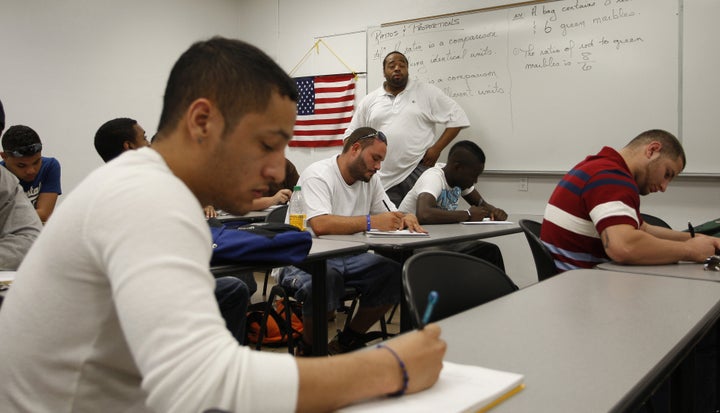
I was not at all shocked by Kaplan University defending its practice of reminding people of their "pain and fears" to motivate them to make "urgent change." The practice is common in the for-profit college business model. As an admissions and financial aid counselor at two for-profit colleges, including one of the largest -- ITT Technical Institute -- I saw that sentiment expressed both verbally and structurally. Of the two, it is the latter that should concern us most of all.
In the first half of my for-profit college career, I helped mostly young, working class women enroll in an expensive cosmetology program. At almost $14,000 it was an expensive 9-month credential, but it was a credential with a clear occupational outcome. I watched young women go on to become self-sufficient in ways that rippled out to their children, families, and communities. Giving a woman a flat iron can change a child's life expectancy and educational trajectory, a grandparent's end-of-life care, and end an abusive relationship. I am proud of the work I did with those women.
By contrast I was never proud of my work at ITT. I sold associates degrees that cost approximately $30,000 and bachelor's degrees that cost almost exactly double, $60,000. Worse, I witnessed admissions counselors, financial aid counselors, and management act from a belief not unlike the one articulated by Kaplan University. Most memorable was a September sales meeting where we were told that autumn is an excellent time to close these "losers" because they will be depressed about their friends going away to college.
The goal was always to close the deal, to meet the sales expectations but not every prospective student was treated similarly. Students who arrived with parents were more likely to get the quick tour with a soft sell. Parents, across class, asked too many pointed questions and were least impressed by shiny dossiers, video montages of happy students, and shiny computer labs. Prospects that arrived to admissions interviews without their parents received an entirely different tour. They were pushed to commit that day by paying an enrollment fee: show 'em and close 'em. For many structural reasons the majority of the prospects that attended without parental or mature supervision were most often black, Hispanic, and/or single moms. Granted, it is not the responsibility of admissions counselors to care about the kind of societal disparities that made these populations particularly vulnerable. Neither, it can be argued, is it the responsibility of the institution or the for-profit college sector to care about structural inequality.
But the rest of us should.
Kaplan's assertion that students' fears and pain should be used to motivate them insinuates what many of us suspect to be true of the people who end up at for-profit colleges: they are lazy and stupid. But the students I worked with were not lazy, unmotivated, or stupid. They understood the value of education. They were aspirational and, yes, they were often desperate. But lazy people do not take two buses with a stroller to make an admissions appointment, as did many of my students. Lazy people do not pay enrollment fees in small cash, collected from tips and family donations. They do not summon the courage to ask their ailing grandmother to cosign for a student loan. My students did not need me to create for them a sense of urgency. They lived their lives with a sense of urgency.
What they did need was to attend a middle school that offered them pre-algebra by the seventh grade if they were stand a chance of taking pre-calculus by their junior year in high school as has become standard for admissions to competitive colleges.
They needed to be born to different, better resourced parents who could afford take the day off of work to insist that they be tested for academically gifted classes when a teacher failed to do so.
They needed to not be a single parent in a country that does not provide affordable daycare or deemed "non-traditional" by a higher education system that still considers a typical student to be 18 years old with two willing, able parents, and access to the Internet.
For-profit colleges did not create these structural inequalities but they do profit from them. By funneling that profit through a tax-supported system of federal financial aid into which we all pay, for-profit colleges are preying upon the weak in the name of us all. That is urgent.
Researchers should respond by interrogating the role, function, and practices of for-profit colleges just as we interrogate our own corners of higher education. For too long traditional colleges have failed these same students through silence and inaction.
For their part, for-profit colleges should make their classrooms, curricula, and operational practices transparent. That there exists no large scale, national data panel available for schools that, according to the Government Accountability Office, received more than $24 billion in federal student aid in 2010 is criminal. Protecting market competiveness is not a legitimate excuse for secrecy when your primary source of profit comes from public funds. You can have trade secrets or federally guaranteed funds but we should finally send the message that for-profit colleges cannot have both.
Men and women who overcome enough of the negative effects of poverty to take two buses to a college admissions interview do not need to be reminded of their fears and pain. They need a legitimate way to transcend them and we should be certain that all colleges are providing them just that.
